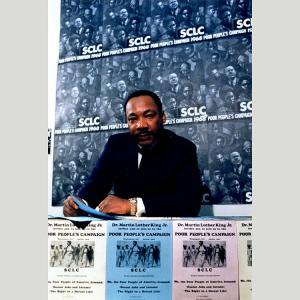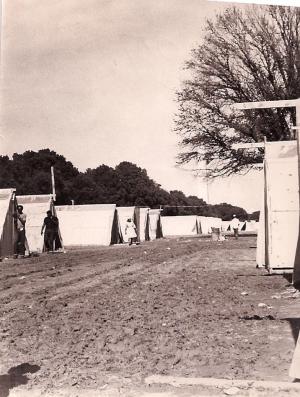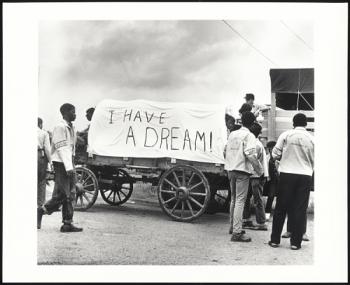 With its home on the National Mall, the Smithsonian has had a front-row seat to some of the largest and most important protests and demonstrations in the nation’s history. Many of these events last only a few hours or a few days at most. The Poor People’s Campaign, also known as the Poor People’s March on Washington, was unique in that it lasted almost six weeks.
With its home on the National Mall, the Smithsonian has had a front-row seat to some of the largest and most important protests and demonstrations in the nation’s history. Many of these events last only a few hours or a few days at most. The Poor People’s Campaign, also known as the Poor People’s March on Washington, was unique in that it lasted almost six weeks.
The Poor People’s Campaign was organized by the Southern Christian Leadership Conference under the leadership of Martin Luther King, Jr. It was intended, in part, as a non-violent response to the perceived failure of the War on Poverty. Unlike most previous demonstrations, it defined poverty as an issue that cut across race and gender lines. After King was assassinated on April 4, 1968, there was some debate about the future of the Campaign, but it was ultimately held as planned under the leadership of Ralph Abernathy.
Coretta Scott King began a two-week protest to demand an Economic Bill of Rights on Mother’s Day, May 12, 1968. Over the next few weeks, caravans of protestors began arriving on the National Mall. On May 21, they began constructing shelters on the Mall. A loosely organized community of thousands of poor people, known as “Resurrection City,” took root. Although demoralized by the weather, political events, and personal conflicts, many demonstrators remained on the Mall until they were evicted on June 20.

The length of the demonstrations provided the Smithsonian with a unique opportunity to serve as a neighbor. Initially, staff wanted to bar the protesters from the Smithsonian museums due to concerns about civil unrest and possible damage to the collections. Secretary S. Dillon Ripley overrode those concerns, however, and not only welcomed the protesters into the museums, but ordered the bathrooms to be amply supplied to provide sanitary facilities for the residents of Resurrection City.
 Particular efforts were made by the Smithsonian to assist families living in Resurrection City. Ralph Rinzler, Director of the Division of Performing Arts, secured a grant to provide childcare so that parents could participate in protest and lobbying efforts. The Smithsonian Education Volunteers Advisory Board asked local political activist (and future docent and Regent) Jeannine Smith Clark to coordinate a tour for the children of Resurrection City. Unfortunately, an agreement could not be reached between the docents and the mothers, but Clark took the opportunity to arrange a program for inner-city schoolchildren instead.
Particular efforts were made by the Smithsonian to assist families living in Resurrection City. Ralph Rinzler, Director of the Division of Performing Arts, secured a grant to provide childcare so that parents could participate in protest and lobbying efforts. The Smithsonian Education Volunteers Advisory Board asked local political activist (and future docent and Regent) Jeannine Smith Clark to coordinate a tour for the children of Resurrection City. Unfortunately, an agreement could not be reached between the docents and the mothers, but Clark took the opportunity to arrange a program for inner-city schoolchildren instead.
Evidence of the Poor People's Campaign can still be found throughout the Smithsonian. From December 2015 through October 2016, it was featured in the exhibition "Twelve Years That Shook and Shaped Washington: 1963-1975" at the Anacostia Community Museum. In the National Museum of African American History and Culture, there is a plywood mural from Resurrection City as well as several related smaller items. And the Ralph Rinzler Folklife Archives and Collections, part of the Center for Smithsonian Center for Folklife and Cultural Heritage, holds many images of the Poor People's Campaign as part of the Diana Davies Photograph Collection.
Related Resources
- Remembering Martin Luther King, Jr., The Bigger Picture, Smithsonian Institution Archives
- Grounds for Solidarity: Mural from Resurrection City, USA, National Museum of African American History and Culture
- Diana Davies and the Poor People's Campaign, Smithsonian Collection's Blog, Smithsonian Institution
- A Place for the Poor: Resurrection City, Boundary Stones: WETA's Local History Blog, WETA Public Television and Classical Music for Greater Washington
Produced by the Smithsonian Institution Archives. For copyright questions, please see the Terms of Use.

Leave a Comment